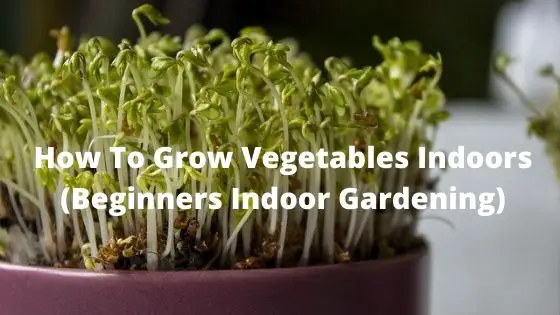Growing vegetables indoors is a great way to get cheap organic food for your family, without having to have a large garden or allotment. Many people get into indoor gardening because they simply don’t have the space outside to grow vegetables. But it’s not just people lacking in space, it’s also people who don’t want to give up gardening throughout the winter.
Because unlike conventional gardening, indoor gardening can be done throughout the whole year!
In this article, you’ll find everything you need to know about indoor gardening and a few different indoor gardening options you can try out today.
What Vegetables Grow Indoors?
The following vegetables can be grown indoors:
- Carrots
- Lettuce
- Kale
- Arugula(rocket)
- Spring Onions
- Tomatoes
- Microgreens
This list is by no means complete, but is a good starting point. Once you master the technique to grow these you can add to your reportoire. Don’t be afraid to experiment, you never know you might discover that you can grow stuff that others haven’t tried.
How To Grow Vegetables Indoors
Let’s go through the list above one at a time, and explain the why, where and how to grow vegetables indoors.
How To Grow Carrots Indoors

Why grow carrots? Carrots contain many beneficial vitamins and minerals that are essential for a healthy life. These include potassium, Manganese, Folate, Thiamin, Niacin, B6, vitamin A, vitamin C, Vitamin K and carotenoids.
To grow carrots indoors you’ll need a deep pot or container, at least 12-18 inches deep (30-45 cms) with drainage holes in the bottom. Fill with good quality soil and water well, then add carrot seeds. Choose varieties that are suitable for container growing like Paris market or other short rooted types.
Carrots need lots of light so place the container somewhere that recieves a lot of natural light. Try not to over water carrots, the idea is to get the root to stretch down into the pot searching for water. After around 12-15 weeks the carrots will be ready to harvest.
When picking carrots or “pulling” as gardeners call it, always push the carrot downwards lightly and twist it slightly before pulling upwards. This pushing and twisting motion frees the roots from the soil making them easier to lift.
How To Grow Lettuce Indoors
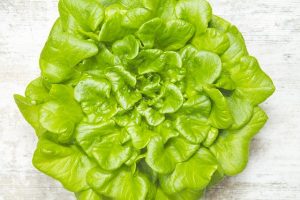
The best types of lettuce to grow indoors are the cut and come again types, these are much easier to grow and are packed full of vitamins. They contain Iron, Folate, vitamin A, vitamin C, and vitamin K.
Just fill a growing tray with compost, water well and sprinkle seeds on the top of the soil. Once they start to grow thin the plants out this is the process of removing some seedlings to allow the rest to reach full size. To harvest just remove outside leaves taking care not to damage the plant or the roots and you’ll continue to reap lettuce leaves.
It’s best to succession sow lettuce, that means once your first tray is starting to produce leaves, start a second tray. This will give you a steady supply of fresh salad leaves.
How To Grow Kale Indoors
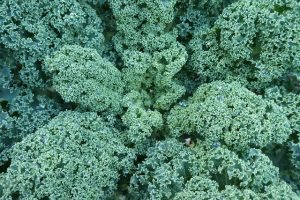
Kale is one of the healthiest vegetables to grow, it’s a good source of Fibre, Iron, Calcium, vitamin C, vitamin K, Antioxidants and a large range of healthy nutrients. Limit each kale plant to one per pot, because kale can grow quite large. Sow seeds directly into compost in a large pot and ensure adequate light.
Harvest like cut and come again lettuce, remove leaves from the outside and kale will keep on producing.
How To Grow Arugula(rocket) Indoors
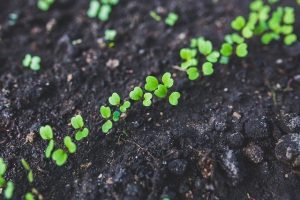
Arugula contains many much needed nutrients including, Calcium, Folate, Potassium, vitamin A, vitamin C, and vitamin K. It has a spicy taste, and can be added to many dishes, as a replacement for lettuce and also as a stand alone vegetable.
Arugula is a fast growing plant, the seeds germinate quickly and it prefers cooler temperatures. Sow seeds in the same way as lettuce, water, and place on a sunny windowsill. Harvest outer leaves and the crown will produce for many weeks.
For best results and a constant supply it’s best to succession plant arugula.
How To Grow Spring Onions Indoors

Spring onions can be started off from seed and they do well on a sunny windowsill. Alternatively, buy some spring onions from the grocery store with their roots attached. Just cut and use the tops, and plant the roots with at least some of the white base still attached.
These will readily sprout new tops that can be harvested time after time.
How To Grow Tomatoes Indoors

In the past, I let my tomato plants die off once Autumn came, but I should have transferred some of them at least indoors. Go for smaller, bush type tomato plants and ensure a sunny position or consider purchasing some growlights.
Tomatoes are hungry plants and require feeding with tomato food to give them the best chance of growing well. I use home made comfrey tea fertiliser but shop bought tomato food is fine too. for more on how to make comfrey tea follow this link.
How To Grow Microgreens Indoors

I’ve saved the best, well easiest ’til last, microgreens are easy to grow and fast to harvest. Simply sow seeds from either a packet of microgreens seeds or a crop of your choice. Use a shallow tray with a thin layer of compost, cover with compost and harvest once the first set of true leaves come through.
For those of you unsure what the true leaves are, or look like they are the second set of leaves the plant gets. The first set usually have round edges these are called Cotyledons and are actually part of the seeds embryo. These Cotyledons provide nutrients to the seedling until the true leaves appear.
Once harvested it’s time to start another batch of microgreens off, you won’t get a second crop from the remaining roots. This is because once all the leaves are removed the plant cannot regrow.
There are many varieties that can be grown as microgreens, like cress, radish, broccoli, mung beans, sunflower seeds, peas, and many more.
More Vegetables To Grow Indoors For Beginners
There are so many easy to grow vegetables that can be grown at home, and I’ve hardly scratched the surface above. Here are a few more really easy vegetables that can be grown indoors all year round.
How To Grow Vegetables Indoors Part 2
How To Grow Garlic Indoors

You won’t get bulbs of garlic indoors, but you will be able to harvest garlic greens. There are 2 ways to grow garlic indoors, either in soil or in water. Start with a bulb of garlic, peel the outer skin to reveal the individual cloves.
Then either place a clove in a pot of soil and wait for it to start sprouting. Or place the clove into a small glass or container filled with water. Once the clove produces green shoots simply cut these off and use in salads etc.
Don’t remove all the leaves and the garlic will continue to produce. Growing in soil tends to last longer but the life of the water grown clove can be lengthened by regular water changes.
How To Grow Celery Indoors
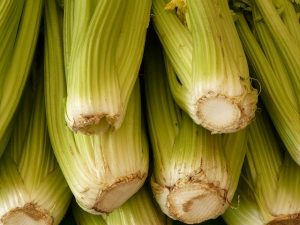
This is so simple that it’s a good way to encourage kids to start growing their own food. Just cut the stalks away from a store bought celery leaving just the nobbly crown at the base. Place this base in a shallow dish of water on a windowsill.
Daily water changes will stop the crown from rotting. Within days new growth will start to appear from the crown, once roots form plant in a large pot and water regularly. To find out how to grow celery from scraps in more detail follow the link.
This method will also work with lettuce, but as lettuce grows so easily from seed anyway it’s not really neccessary to grow from scraps. It can be fun for kids though. For more on this subject from the University of Nevada follow this link.
How To Grow Onions Indoors
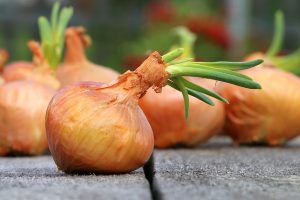
This method is exactly the same as the garlic method above, and like the garlic, onions will only produce leaves. The leaves have a strong onion flavour and can be used as spring onions.
How To Grow Mushrooms Indoors
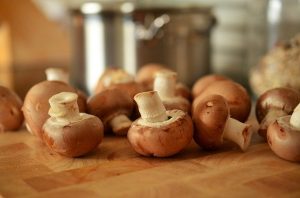
There are many mushroom grow kits available and these make mushroom growing easy. Some are reasonably priced and can be purchased for around £5.00. Just follow the instructions and watch them grow.
How To Grow Vegetables Indoors Using Kits
I touched on this with the mushroom kits above but there are other useful kits available to help with growing vegetables indoors.
Sprouting Jars
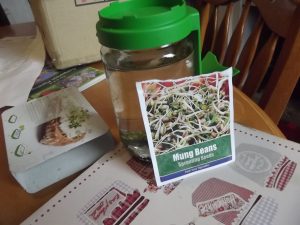
These are basically glass jars with strainer type lids. Typically used for sprouting mung beans, which once sprouted become bean shoots. The whole process from start to finish takes around 6-7 days.
A simple design that’s simple to use and another good idea to get kids interested too. Producing nutritious fresh shoots that can be eaten raw or cooked in stir fries.
Cress Growing Kits
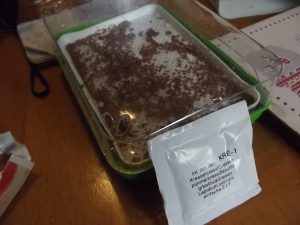
Another easy to use inexpensive kit, the one I have doesn’t use soil just water to grow delicious fresh cress in around 7 days. It’s not necessary to use a kit, cress can be grown on wet kitchen paper, in soil or on blotting paper.
Hydroponic Indoor Gardens
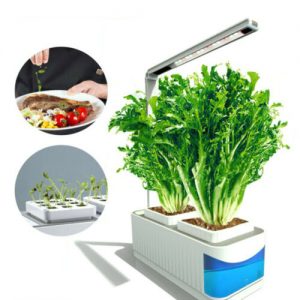
These work on the Kratky theory of adding nutrients to the water, but it’s not running water. The trick with these is to allow oxygen to get to some of the roots. To find out more about the Kratky method follow this link to wikipedia.
Again it’s not necesary to purchase one of these, but it is easier. Otherwise you need to also buy some form of growlights. With these kits the growlights are incorporated into the design making them a convenient way to grow vegetables indoors.

